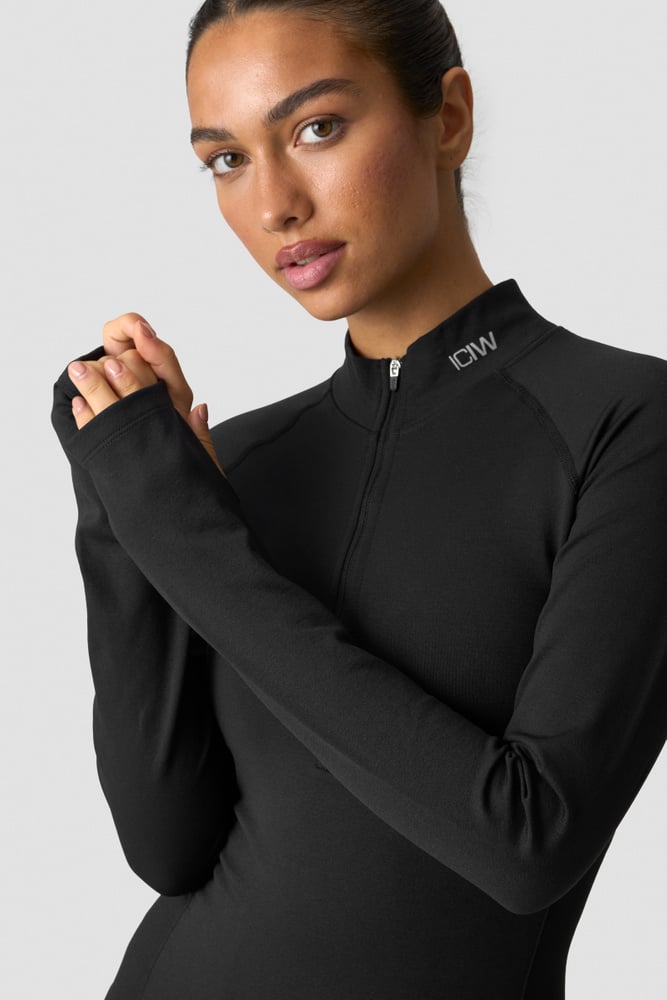
Define Thermal Seamless 1/2 Zip LS Black
79€
+ 2 couleurs
The Layering Edit: How to Train Outdoors Year-Round
Outdoor Training & Layering
Training outdoors means facing every element — and the right layers make all the difference.
When the temperature drops, ICANIWILL turns cold into clarity. The goal isn’t to pile on fabric—it’s to create the right microclimate closest to your body so you can move freely, stay warm, and avoid that clammy, overheated feel. With the ICIW layering principle, you fine-tune warmth and ventilation on the go: open a zip on the climb, close it on the descent, add a vest when the wind picks up. Start a little cool and let your engine do the rest; within five to ten minutes you should feel comfortably warm.
Layering is a system. Your base draws moisture away from the skin, your mid traps insulating air without bulk, and your final layer shields you from wind and light precipitation while still breathing. ICANIWILL designs each piece to play its role with precision—stretch where you need it, structure where it matters, and clean lines that won’t flap or chafe when the pace increases.
Some of our most popular layering products:
Define Wool V-Shape Tights
Define Wool Long Sleeve
Thermal Seamless Leggings
Essential Seamless 1/4 Zip Long Sleeve
Define Thermal Seamless 1/2 Zip
Essential Thermal Training Jacket
Essential Wind Jacket
Essential Insulated Vest
Base layer
Your base is the foundation of every cold-weather session. It sits close to the skin to transport sweat and prevent that chill that creeps in after a hard interval or a long hill. For higher-intensity running, choose technical synthetics that move moisture fast; for steadier or colder efforts, a wool-blend keeps warmth even when damp and naturally resists odor. ICANIWILL builds base pieces with flat seams, purposeful stretch, and smart details like thumbholes to seal in heat without bulk. ICANIWILL picks: Define Wool Long Sleeve - cozy, mobile and resilient in true winter conditions. Essential Seamless 1/4 Zip Long Sleeve - fast-wicking with easy, one-hand ventilation. Define Wool V-shape Tights - smooth next-to-skin feel that layers effortlessly under outer tights. How it should fit: like a second skin—snug enough to keep fabric in contact for efficient wicking, but never restrictive. If you can rotate your shoulders and take a deep breath without the hem riding up, you’re in the ICANIWILL sweet spot.
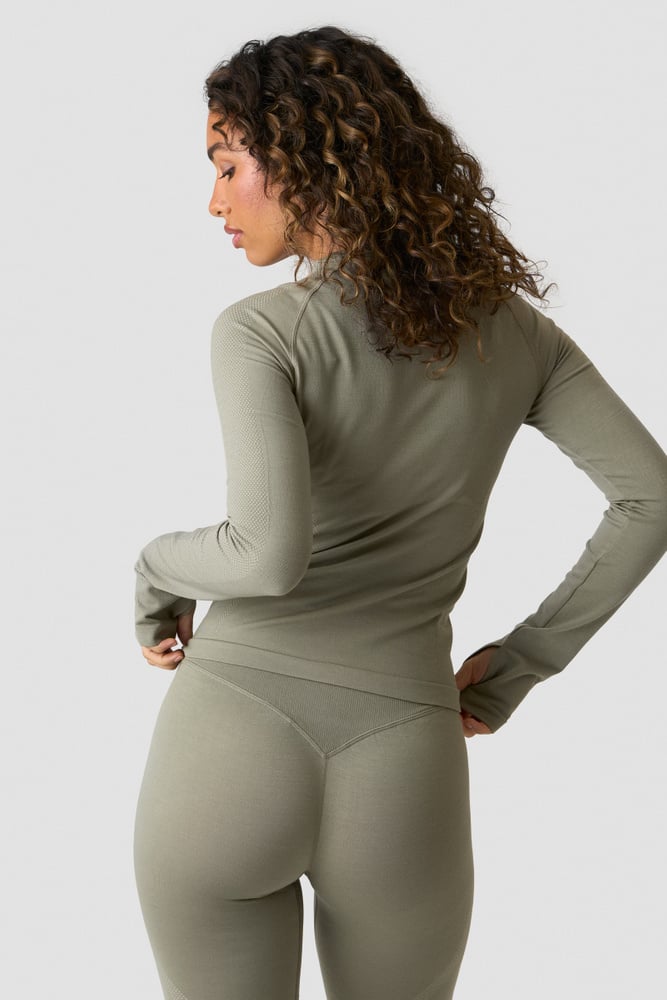
79€
+ 3 couleurs

89€
+ 2 couleurs

69€
+ 2 couleurs

49€
+ 3 couleurs

89€
+ 2 couleurs
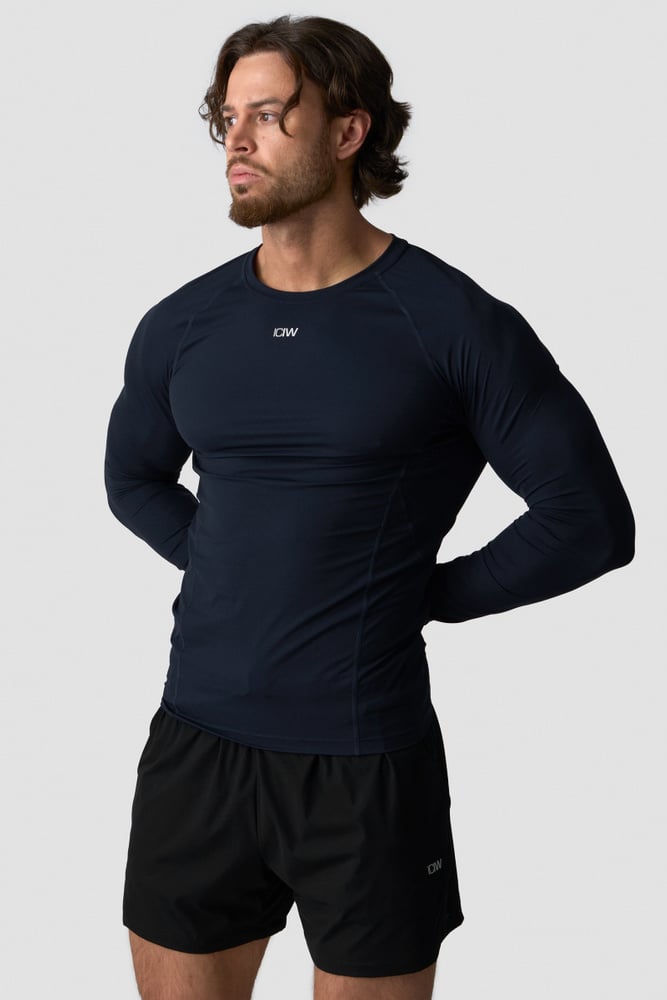
59€
+ 2 couleurs
Mid layer
Once your base is doing its job, your mid layer provides controllable insulation. The brief is simple: trap warm air, let moisture escape, and adapt instantly when your effort changes. Zippers, knit structures and mapped textures are your friends here. ICANIWILL mids add warmth you can use—not just carry. ICANIWILL picks: Define Thermal Seamless 1/2 Zip - targeted warmth with on-demand venting. Essential Thermal Training Jacket - light insulation and training-grade stretch. Define Thermal V-Shape Tights - extra leg warmth that still moves like your favorite gym tights. How it should fit: clean over the base, no bunching at elbows or behind the knees, and enough room to breathe hard without pressure across the chest. You want an easy zip you can manage with gloves and a hem that covers your lower back when you’re leaning into the stride.
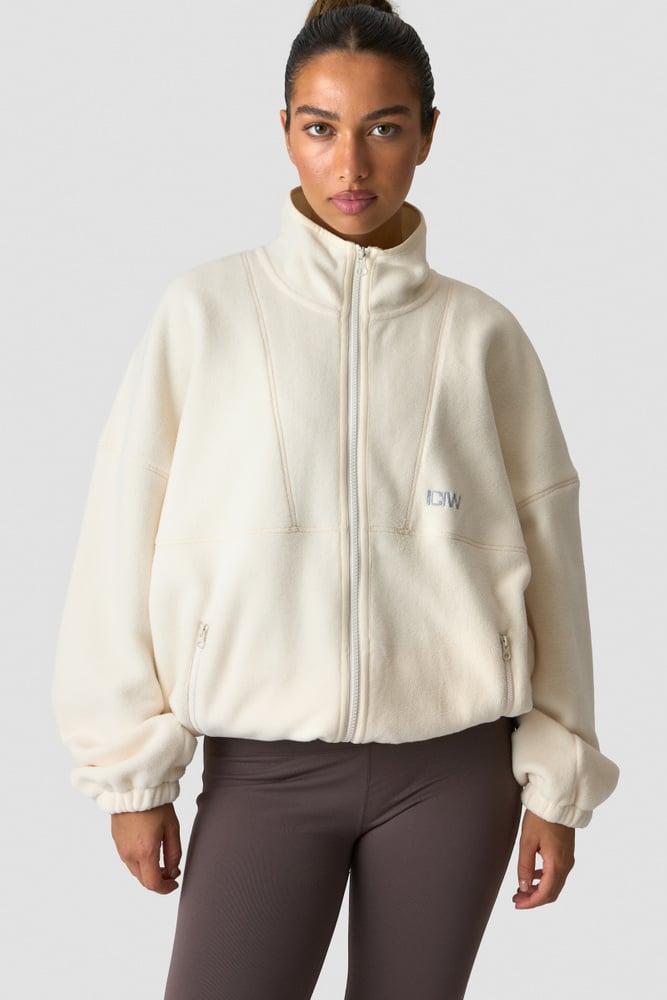
99€
+ 2 couleurs

79€
+ 2 couleurs

49€
+ 4 couleurs

89€
+ 2 couleurs
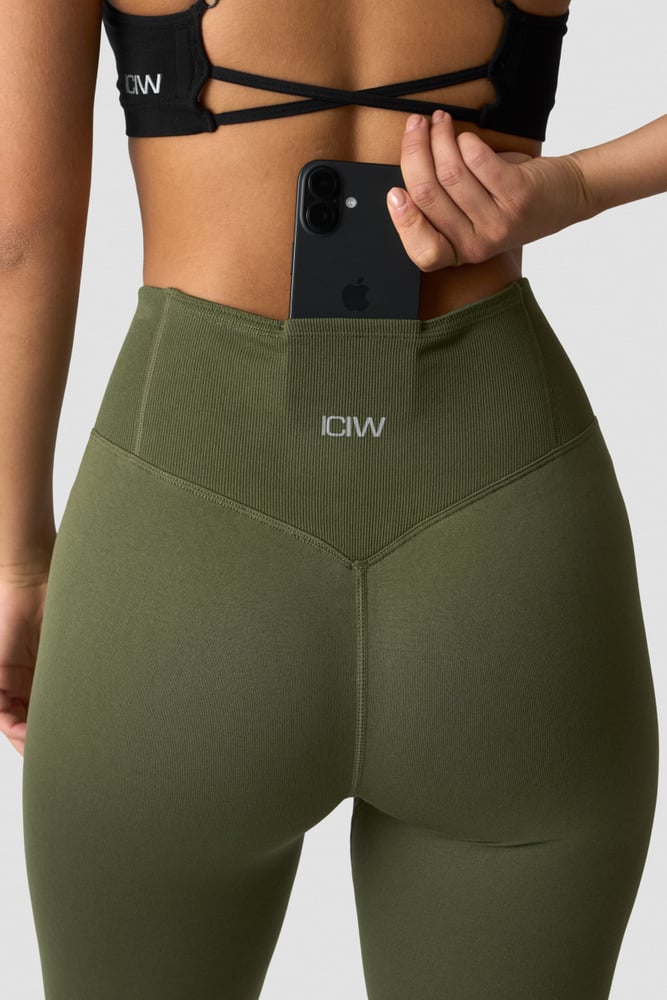
89€
+ 1 couleurs

69€
+ 2 couleurs
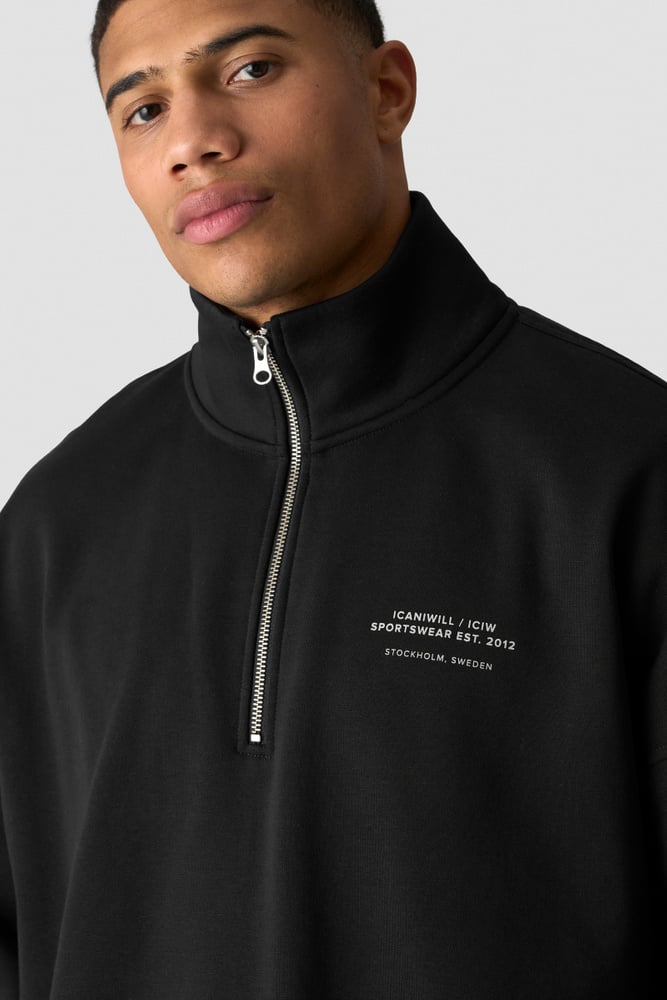
89€
+ 2 couleurs

89€
+ 2 couleurs
Final layer
This is your mobile weather shield. It should block wind, bead off light drizzle, and let excess heat escape. A good final layer makes small adjustments powerful: a two-centimeter zip drop can release surprising heat; a quick close before a ridge line keeps you from over-cooling. ICANIWILL outer layers balance structure and freedom so you can keep your cadence smooth when the weather turns. ICANIWILL picks: Essential Wind Jacket - reliable wind block with runner-friendly mobility and reflectivity. Essential Insulated Vest - core warmth with free arms, perfect for intervals and windy straights. Essential Thermal Training Jacket - when it’s cold and dry and you want one breathable jacket to do it all. Fit notes: athletic, not tight. You should comfortably layer a base and mid underneath and still swing your arms without tugging at the shoulders or elbows. Look for a soft chin guard, a hood with good side vision, and a drop tail for splash protection.
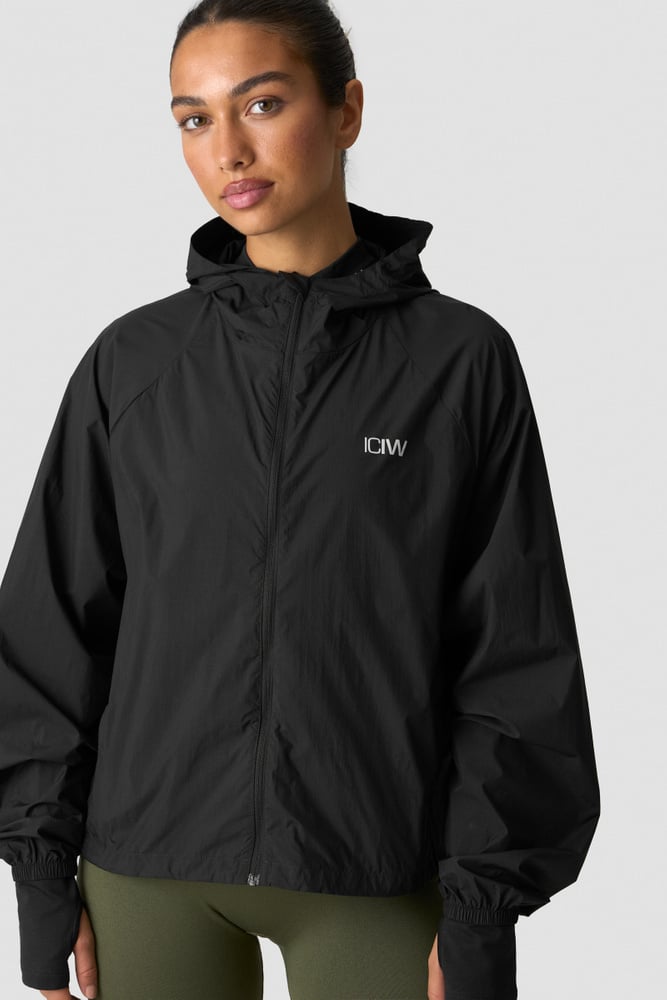
99€
+ 1 couleurs

99€
+ 2 couleurs
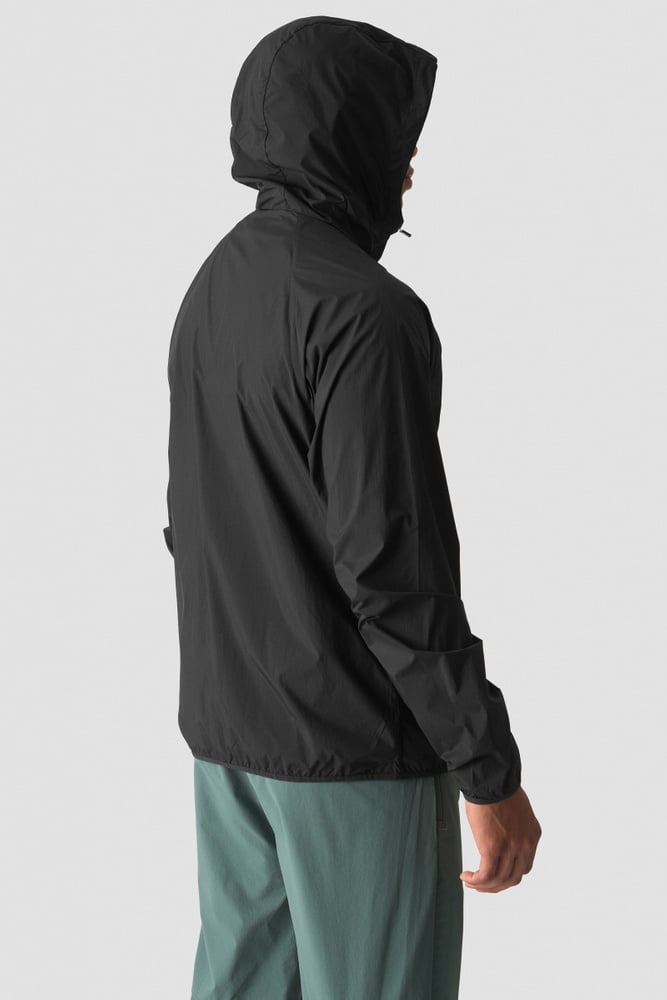
99€
+ 1 couleurs

89€
+ 1 couleurs
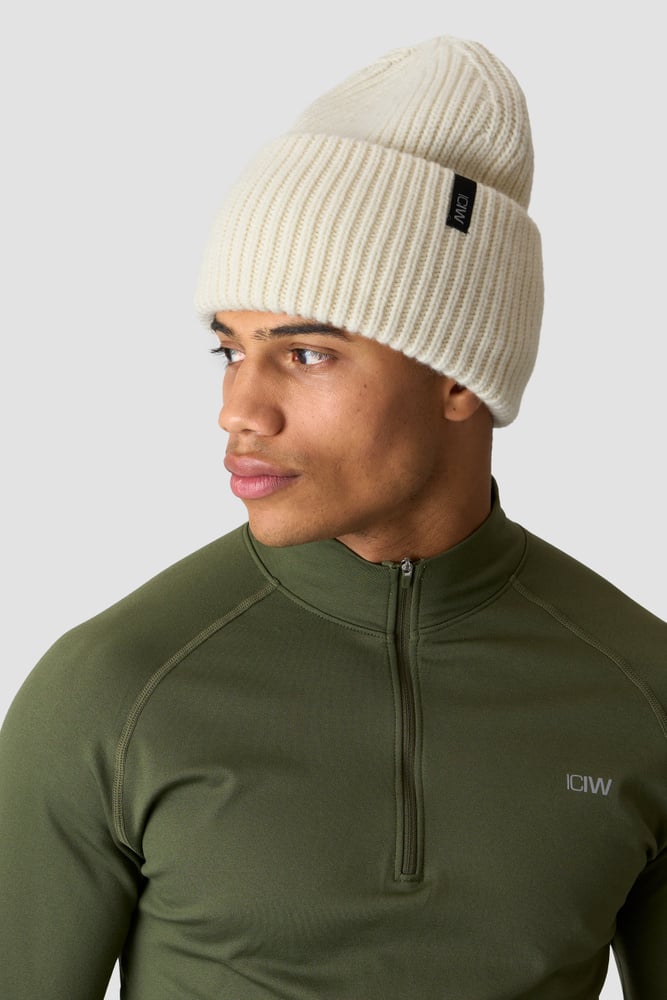
59€
+ 3 couleurs
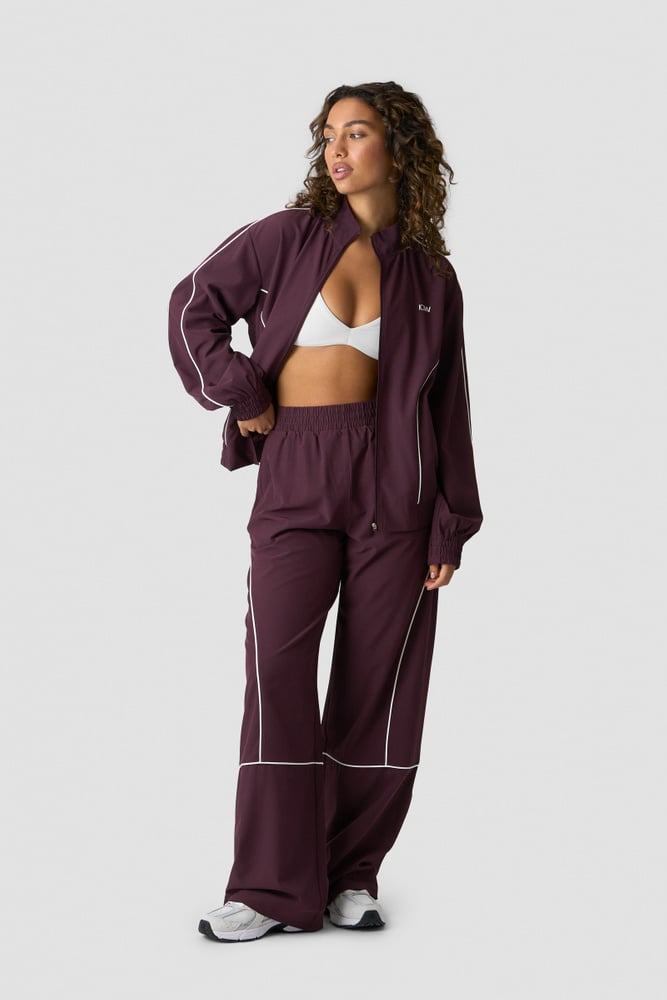
99€
+ 2 couleurs
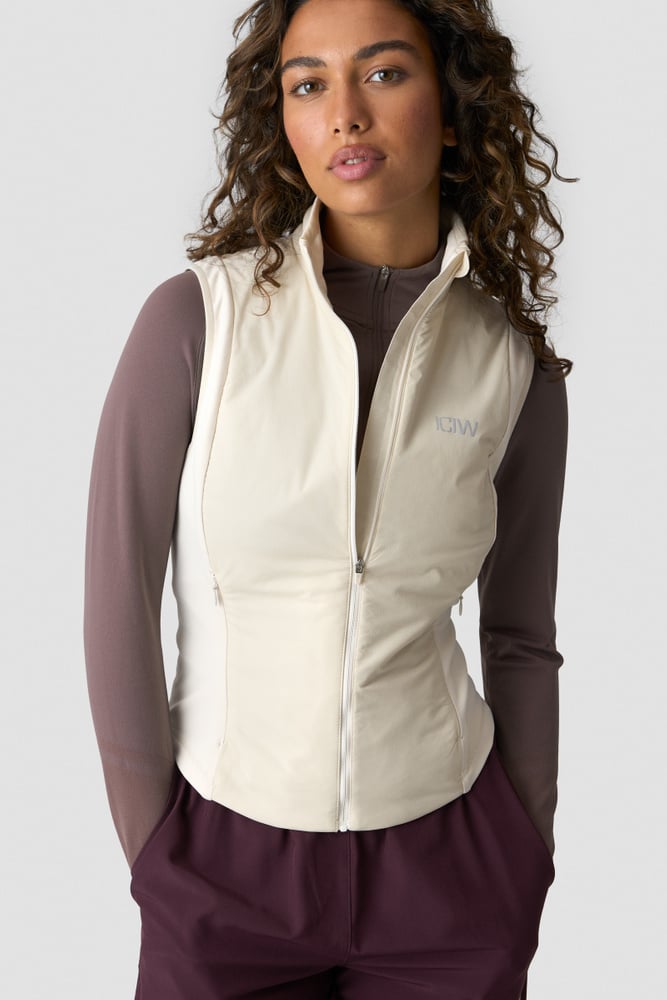
99€
+ 2 couleurs
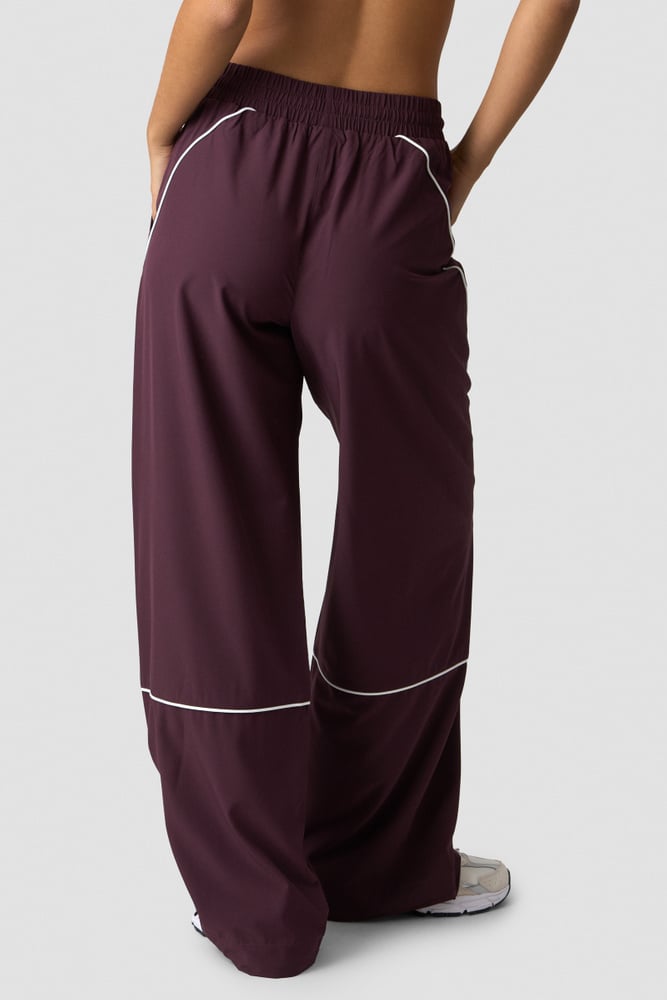
89€
+ 2 couleurs
Warm up dynamically before you head out—ankles, knees, hips and upper back—to switch on range of motion. Use zippers like dials, not switches: a slight opening on climbs can prevent a sweat spike you’ll pay for later. Protect extremities with a thin beanie or headband, a buff for windchill, and gloves matched to the day; ICANIWILL outer layers feature reflective details that help you stay visible in winter light. After longer sessions, swap your base for a dry ICANIWILL top to avoid the post-run chill. Cold costs energy, so carry an easy snack on efforts over an hour.
No matter the weather, smart layering helps you stay comfortable, focused, and ready to perform. Here we answer some of the most common questions about outdoor training, running, and how to dress for changing conditions.
Is a wind jacket enough in light rain?
Yes, for short showers. For longer or heavier rain, choose a waterproof shell with a membrane.
Wool or synthetic?
Wool works best in cold weather or at an easier pace. Synthetic fabrics are ideal when you sweat a lot — or mix both for the best of both worlds.
How do I avoid getting cold after my session?
Put on a vest or a dry base layer immediately when you stop to retain warmth.
What should I wear for outdoor training in winter?
Start with a moisture-wicking base layer, add an insulating mid layer, and top it with a windproof or waterproof shell. Don’t forget gloves and a hat.
How do I dress for running in different temperatures?
Dress in layers you can easily adjust — lighter materials in mild weather, more insulation and coverage as temperatures drop.
Can I wear the same clothes for trail running and city runs?
Yes, but trail running often calls for more durable, water-resistant gear and better grip underfoot.
What’s the best layering system for outdoor workouts?
Base layer to manage moisture, mid layer for warmth, and outer layer for protection — simple but effective all year round.
Do I need different gear for morning vs. evening runs?
Not necessarily, but add reflective details or a headlamp in low light, and consider an extra layer when temperatures are lower in the morning.
Browse other stories:
Guides
Sports Bra Guide
The right sports bra makes a difference in every workout. In this guide, ICANIWILL helps you choose the right level – light, medium or high support – and find the fit that really fits.
Guides
Tights Guide
Not sure which tights are right for you? Our guide makes it easy to find the perfect pair for your workout and lifestyle
Drops
THE GETAWAY CHAPTER
Sometimes stepping back is what pushes you forward. It's not about slowing down, it’s about finding a new kind of energy. Fresh air, no rush, a different rhythm. That’s where the reset happens. Where you recover, refocus, and come back ready.